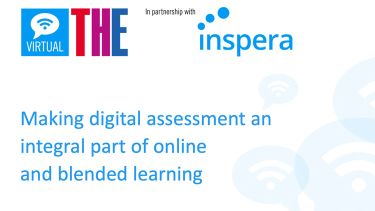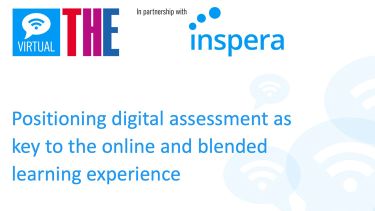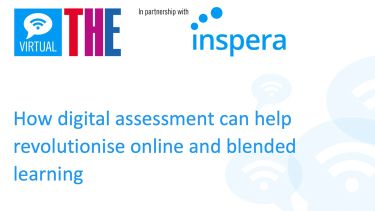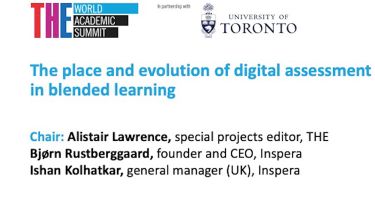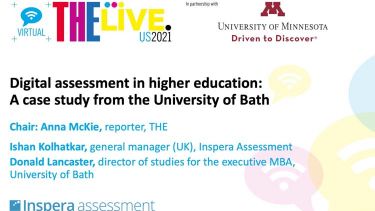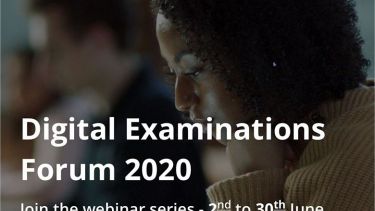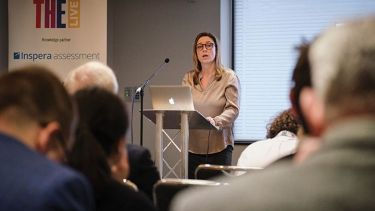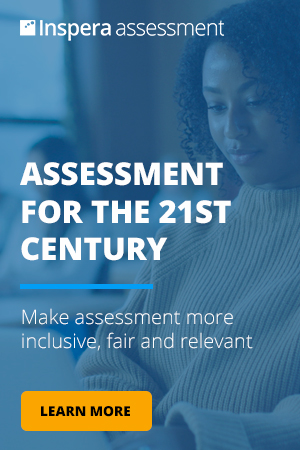Online evaluation better prepares students for the world of work, but institutions have to include these digital processes in their strategic planning
Student experience needs to be at the heart of digital transformation for it to be successful, according to Ishan Kolhatkar, general manager for the UK at Inspera Assessment, speaking at a Times Higher Education Europe Universities Summit session.
When the pandemic closed higher education institutions’ doors last year, providers pushed their activities online, including assessments. “During the course of the pandemic, everyone had to pivot very quickly to doing their assessments in a digital format,” said Kolhatkar, whose company specialises in digital assessment tools.
Initially, many institutions were forced to go online, but institutions are now embracing digital assessments as these offer new opportunities and ways of engaging with students. “You can innovate by doing things that you wouldn’t or couldn’t do with pen and paper,” he said.
But to make the most of digital assessment tools, institutions need to include students in their strategies from the beginning. Each institution is different, as are their student cohorts, Kolhatkar said. Digital assessment tools need to fit students’ experiences of assessment and their digital infrastructure, as well as the skills that assessments must evaluate or foster.
“There is a debunked assumption that students are young and use technology all the time, and therefore if I put anything in front of them, it will work,” he said. “But that might not be the case.”
Assessments are already stressful for students – and that is before they are asked to perform them on a platform that they may not be familiar with. “Student experience is so wholly important to making this work and students feel comfortable,” he said. Inspera Assessment’s platform is designed to look like a web page so students are better able to engage with the familiar screen layout, Kolhatkar said.
The pandemic has highlighted the digital inequity that many students and staff face, both between institutions and within them. “Do you know how many of [your students] own their own computer, what it is and its operating system? What kind of camera does it have?” Kolhatkar asked. This type of information can help universities develop successful digital assessment strategies, both in terms of the minimum platform specifications they require and the spaces and devices they need to provide students who don’t have their own infrastructure.
Additionally, universities are not the only institutions that have gone digital. The world of work is more online than ever, and graduates need to be able to collaborate and work in different ways, Kolhatkar said. Digital assessment enables students to collaborate on projects and can foster online collaboration skills while testing students’ individual abilities and knowledge. “Collaboration really describes what we do in the world beyond education,” he said.
For students, online oral assessments can mimic the world of work, and examiners benefit from having their recording and marking in one place, which can significantly improve an institution’s efficiency, Kolhatkar said.
Importantly, digital assessment has the flexibility to allow students and faculty to choose the evaluation method that best suits their requirements. With online evaluation, “we can use our knowledge to make sure that we get a more rounded skill set from our students”, Kolhatkar concluded.
Watch the session on demand above or on the THE Connect YouTube channel.
Find out more about Inspera and higher education.



